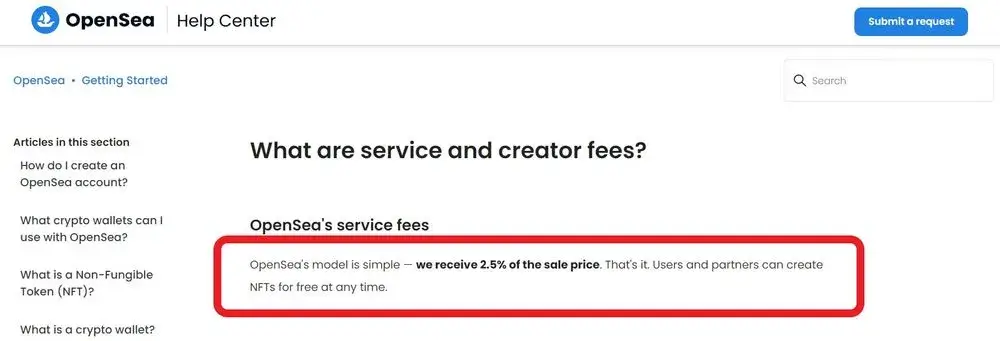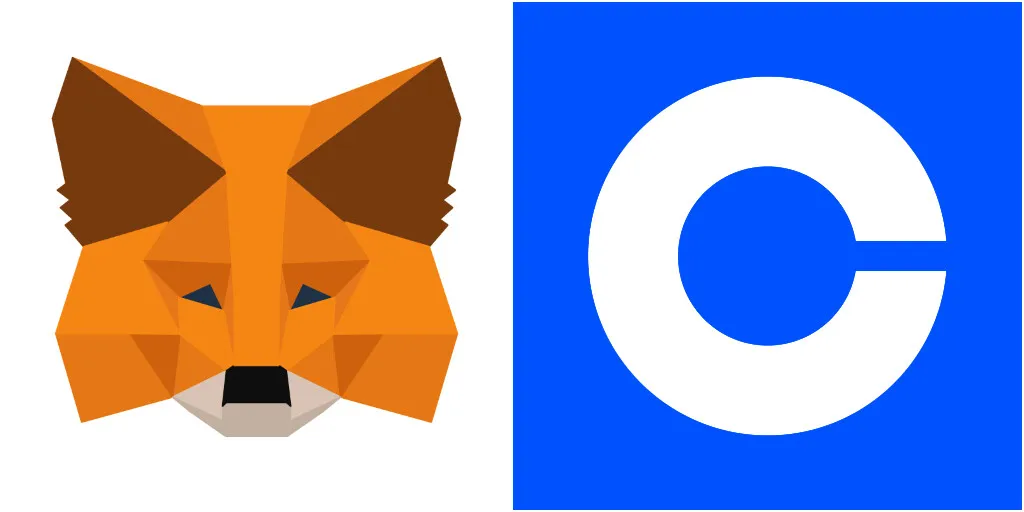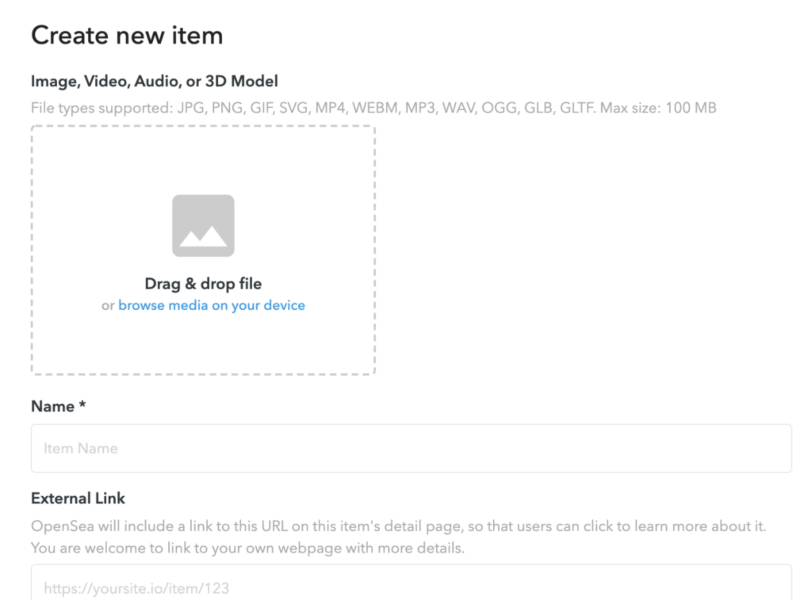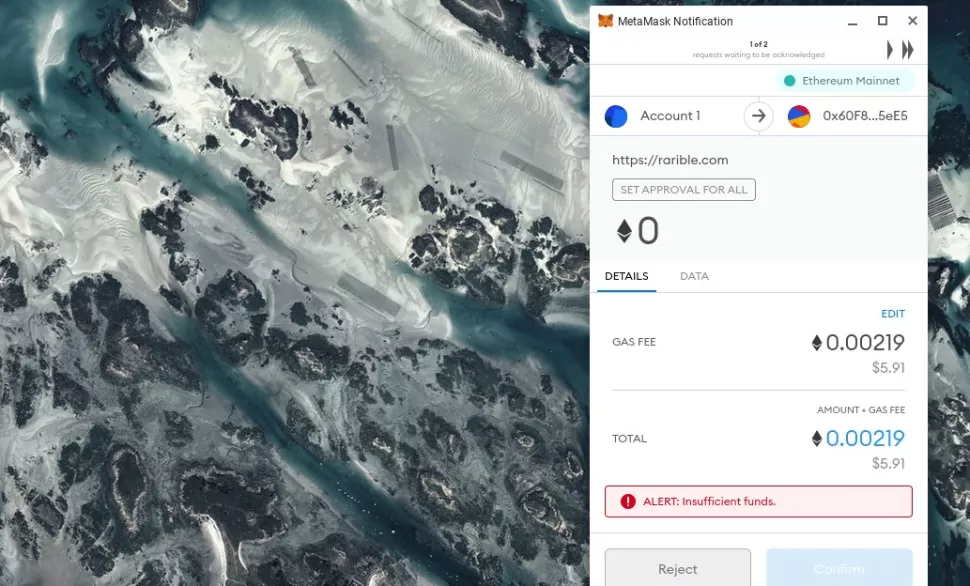NFTs keep being a trending topic on many internet forums and platforms. The boom that gave them fame over the last couple of years didn’t faze out, and NFTs are still an industry worthwhile to get invested in.
With celebrities getting into it and millions of dollars in trading volume moving around, you are still in time to make the jump and join many digital artists that perceive NFTs as a new way to do business and reach out to their fans.
Digital artwork is still the most popular art form adopted by the NFT landscape. They even became the main center of attention of several art galleries worldwide. If you want to become an art celebrity, remember that nowadays, an NFT artist has the same possibilities as someone following the traditional path.
So, for those who want to become a part of the art world and create NFTs, we will take a look at how to make NFT artwork, the many benefits (and possible setbacks) of creating NFTs, what apps you can use to create NFT art, as well as how to how to list it for sale on the NFT market.
What is NFT Art?

NFTs (Non-Fungible Tokens) are digital assets stored on the blockchain. They are tokens that represent ownership over certain items. An NFT will always reside on the blockchain and can’t be copied, replaced, or destroyed. But they can be traded for other NFTs or for cryptocurrencies.
An NFT will always be unique, making it a perfect way to create collectible items. And what other industry uses the same concept to value their assets? Art.
Still, a digital asset can be a representation of various concepts, such as videos, audio clips, memes, etc. Long story short, If it can be converted into a digital file, it can become an NFT. However, digital art has always been the main focus for NFTs and is still quite strong.
People also use NFTs to represent the ownership of a real-world item. You don’t necessarily need to make your art an NFT. You can create it in your own way and then submit a token representing ownership of your work. Of course, if this is your method of choice, you must prove the real asset exists, and the owner can verify its state and authenticity.
How Much Does It Cost?

Everyone who wants to mint NFTs will end up paying what is called a “gas fee.” It is compensation for those “miner servers” that will produce your NFT at the cost of electrical energy.
This fee will vary depending on several factors, such as when you are minting it, how fast the transaction you want to be, and where the blockchain is made. For example, Ethereum is the most popular blockchain for NFTs, but its bigger setback is the high gas fee prices to be paid. Although, thanks to Ethereum 2.0, that problem was already diminished. And there are ways to avoid paying gas fees right upfront when you will mint your NFT using “lazy minting” (which we will explain later).

Then, you will also be paying a service fee for using certain NFT platforms. For example, the NFT marketplace OpenSea will charge you 2.5% of the sale price. Whenever you are searching for the right marketplace, you should check the service fee and if it will influence your decision.
Benefits of NFTs
Whether you are interested in NFTs as a creator or an enthusiast, investing in them could bring you several benefits. For both its collectible and monetary aspects, there is quite a value to get for making or purchasing an NFT.
Uniqueness and Tradeable, Easy to Authenticate
NFTs are stored in the blockchain, and due to the code that is behind this technology, NFTs can never be fully replicated or altered. This ensures an NFT its uniqueness, which ultimately is the value people give them.
They can be traded and re-sold in the market. Many people took advantage of the NFT craze to buy some of them just to get some value by re-selling to other interested people for cryptocurrency or other NFTs.
Also, blockchain technology registers records of all transactions, allowing anyone to easily verify and authenticate NFT digital files. They work as digital records by themselves and can easily prove the history and ownership of the asset.
Sale Royalties

Most NFT marketplaces allow creators to set royalties whenever they create an NFT. This means that the author will receive a percentage of any subsequent sale of the NFT, giving you a chance to get a passive income from your work.
Other creators also contact smart contract developers to code royalties into their NFTs. It works similarly, with the opportunity to get royalties from the open market.
Market on the Rise
The NFT market is still in an early stage but is developing quickly. Millions were already sold, and a high volume is still being traded over different platforms. There is still a lot to be explored.
Possible Setbacks of NFTs
Not everything is perfect, and NFTs are no exception. Due to being quite a new technology, people found some flaws in the system to be resolved over time.
Your Art Might Not Sell in the Short Term

As might happen for anyone who wants to become an artist, you will risk your art not getting buyers in the first minute. People will take some time to pick up interest in your work before they are willing to pay money for it.
You may find headlines and news of people selling their work for thousands of dollars in minutes. There are a few lucky ones out there, while others have been working on increasing the audience’s interest over time.
How quickly your NFT sells will depend on the perceived quality and how well it is marketed. Your work might be fantastic, but you won’t be going anywhere if people don’t know about it.
Volatile Market and a Confusing Concept for Many

NFTs suffer from a similar issue with cryptos,which is their volatility. Projects without a strong back end can suffer from sudden drops in the market, plummeting their value. While many people are trading, the price can fluctuate quickly.
And while NFTs have made their first steps toward a mainstream audience thanks to celebrities and news covering it, it is a confusing concept for many. This could limit its true potential and growth until more people get familiar with NFT ideas.
How to Create Digital Art as NFTs?
To create and sell NFT art, you don’t need to be a professional coder or software engineer. Nor do you need to have a lifetime experience in the art world. Many apps for NFT creation simplify all this work and allow many people to give it a try without many hurdles.
Next, you will see a list of the best NFT art creator apps available to try, and you will be able to use them on your mobile device or your PC as well.
8Bit Painter

8Bit Painter allows you to create NFTs in Pixel-Art. Some well-known NFT projects have found success using this art style, like CryptoPunks, and it is one of the most popular styles in the NFT market.
This app is quite popular among NFT enthusiasts, considered the best for creating pixel-art-style NFTs. It allows you to create them in many styles and sizes and use many color palettes for your drawing. It can also convert any image into an 8-Bit pixel picture and has easy-to-export features, giving you a preview and preparing you when you decide to make it an NFT.
You can create an NFT image using a canvas between 16×16 and 160×160. We recommend going “small” if you are creating your own art. But if you want to import a picture, try going for the largest size.
Download it from the Google Play Store or the App Store.
GoART

GoART uses AI technology to incorporate images that enable you to convert any image into an NFT. It also has its own NFT platform to mint, create and sell NFTs.
It also has a feature that allows you to print your artwork from within the app. Previewing how it would look on a t-shirt, photo portfolio, or wallpaper is excellent. You can export those images if they don’t exceed 8MPs.
You can try out many of these features for free, but for a more complete experience, you will need a premium subscription. The premium packages range from less than $2 to almost $35.
GoART recently included a new BTF-related feature to increase its efficiency in minting NFTs, making the NFT creation process much easier and cheaper. But if you don’t want to use their marketplace, you can export your work to other NFT marketplaces like OpenSea, Rarible, SuperRare, etc.
You can download it for PC, Android, or iOS.
Pixel Studio

Pixel Studio is a fast, simple, and portable tool popular among developers and artists in the NFT space. It has various features and a simple and intuitive interface that allows anyone to create cool NFT projects.
It can be used everywhere, as it is available for Android, iOS, and PC on Steam. It also has functions to make your art come alive, allowing you to add some animations and sound effects for your NFT images. You can export and share your NFT videos as an MP4 file.
Many of its main features are free, but you can subscribe to access other premium features.
SketchAR

SketchAR has its own NFT marketplace, allowing you to design, create and sell an NFT on the same platform.
It comes with several templates, allowing you to convert your art into NFT for free. It even comes with a well-thought-out tutorial to guide you through.
SketchAR also comes with AR (Augmented Reality) and AI technology that converts any surface and image into a canvas. But, if you want to make something 100% original, you can enhance your art knowledge with the courses for drawing lessons that SketchAR provides.
If you decide to make a sale on this app, it will deduct 5% of the service fee from your first sale, and any subsequent sale will only get a 1% deduction. SketchAR also gives some incentives, like the program “Creator of the Week,” where anyone selected will get their work automatically posted in the OpenSea marketplace.
It is free on the Google Play Store or the App Store.
NinjaFT

NinjaFT has various templates to ease your NFT creation process and a widget function that allows you to animate your art designs.
The templates that NinjaFT provides are done with high quality to help you produce the best NFTs. The app also features community support on its Discord server and free daily drops.
It is very easy to use, with the option to buy and mint NFTs. You can download it free from the Google Play Store or the App Store.
How to Mint and Sell NFTs?
Once your artwork is ready to convert into an NFT, you must look out at the different NFT markets and see where to “mint” it.
Minting an NFT is the process of creating it into the blockchain. It is a process (that might cost you some “NFT fees”) that most NFT platforms allow you to do simply by connecting your crypto wallet to their website, filling out a form, and uploading your digital files.
So now we will check every step it takes to mint an NFT.
Get Your Work Ready
NFTs are generally tied to pieces of digital art. But maybe, in the middle of the road, you decided to take a different approach, as it also can be videos and audio clips. Any option is as valid as creating a unique collection of images. Your goal should remain the same: create a unique piece of digital media art that can be sold.
NFTs provide value to creators due to their uniqueness. And you must own the rights to the digital media you are using. You will run a great risk if you base your art on a popular existing Intellectual Property.
Pick Your Blockchain
All cryptocurrencies and NFT collections will be placed in a Blockchain. They are incorruptible and can be distributed across many networks. All the data is recorded and can be verified by computers of each network, making it secure and transparent for sharing your work.
Ethereum
Most NFTs are done on the Ethereum network. It utilizes the ERC-721 standard, storing the metadata of NFTs in the Ethereum blockchain. It was developed by the same team that made the ERC-20 smart contract, which determines the security details, metadata, and ownership details required for exchanging and distributing tokens.
Most NFT platforms support Ethereum. One of their main disadvantages was the high gas fees to pay for NFT sales and transactions. Although their team already got rid of that issue when they went from the “Proof-of-Work” protocol to the “Proof-of-Stake” consensus mechanism, reducing the energy required for each action on the network.
Solana
If you are looking for some alternatives, you should consider Solana. It is a faster and lower-cost alternative to Ethereum, with a growing number of apps supporting this blockchain. It uses Proof-of-History and PoS consensus mechanisms to boost its transaction speed.
Polygon
Another option would be Polygon. If the gas fees become a concern for you whenever you want to mint a new NFT, the Polygon blockchain allows you to do “lazy minting” on the Rarible marketplace. This means that you will pay the gas fees after your sale is confirmed, allowing you to list your NFT virtually for free.
Set Up Your Digital Wallet
You will need some cryptocurrency available to create an NFT and list it for sale. NFT marketplaces will require you to pay upfront a service fee for minting an NFT in their platforms (around 2.5%). Then, you will need to pay a gas fee for any transaction, which might be higher depending on how fast you want it to be, if there is too much traffic on the network, and depending on which blockchain you are using.
To do all this process, you will need a digital wallet. It is an app that allows you to store crypto and NFT tokens. Many can be added as web browser extensions and have their mobile versions available.

We recommend using Metamask or Coinbase, as they have a good history against cyber-attacks and security threats and are quite simple to set up and use. They are also compatible with the most popular NFT marketplaces and support many different blockchains.
We also recommend using crypto exchange services like Binance or Coinbase to acquire some cryptocurrency. They both allow you to link your bank account to the app and easily purchase any crypto available.
Choose an NFT Marketplace
Once you have your digital wallet ready and choose on which blockchain you will mint your NFT, it is time to select the right NFT marketplace.
Each one has its own set of rules and requirements and its own service fee. You should review them before jumping right into them. Some features you should consider are the token standard they use for their platform, the user verification process, their token fractionalization, wallet compatibility, if they have a price discovery feature, and if they offer incentives to their creators.
OpenSea
OpenSea is the most popular NFT marketplace by far. Since its launch in 2017, it has surpassed the $20 billion mark in trading volume and has over 2 million NFT collections listed. It supports plenty of different blockchain networks, and you will be able to submit a wide array of different kinds of digital assets.
Rarible
Rarible is another popular alternative, just falling behind OpenSea. It is as simple as OpenSea, sharing many of the same features. But it allows you to use “lazy minting” with many blockchains (while OpenSea only if you choose Polygon network). It is also governed by its community, using its native token.
Solanart
A third alternative we recommend is Solanart. As the name suggests, it is an NFT platform based on the Solana blockchain. It has a great user interface and an easy application process for minting.
Create the NFT in Your Platform of Choice
Now you need to head to the NFT marketplace you have chosen and mint your NFT. To do so, most platforms have a similar process and will use OpenSea and Rarible as examples.
First, you must create an account on the NFT marketplace’s website. It is a simple process that only asks you to verify your email address. Once you finish that, click on the “Create” button in the top-right corner.
You’ll be presented with a selection of digital wallets to connect yours. Select the one that you will be using (or click on “more options” if it didn’t appear at first glance). A pop-up will appear to connect it. Follow the instructions, and your wallet will be connected to the marketplace.
Then you will be presented with submitting one or a collection of NFTs. The second choice is for those that want to submit multiple copies of the same NFT. Click the one corresponding to your needs, and we will proceed to the proper creation process.

Here you can upload your NFT file and get a preview of how people will see it in the market. Then, you should add a title, description, additional links to external websites, and how you wish to sell it.
Most marketplaces will give you “Fixed-Price” and “Auctions” options. You set a price for the first one, and the first to pay for it gets the NFT. Auctions work as any other; set a starting and end date, and the best bid when time runs out gets the NFT. You will also be able to set royalties, earning a percentage of each subsequent sale of your NFT.
List the NFT Sale

Once everything is settled and done, click on the “Create” button, and you will be redirected to a new page to connect your wallet and all the service and gas fees you need to pay. Check if you have the required funds and click on confirm.
Don’t worry if you don’t have them, as your listing will be saved until you pay it or delete it. Go to your items list and click “Sell” once you are ready to list it.
Closing Thoughts
NFTs are a great way to sell artwork and get closer to your fans. By converting your work into digital art, you can mint it and sell it as something unique in an ever-growing open market.
There are plenty of possibilities yet to be explored for NFTs. With each one that appears, it will open up a new way to interact with each other over the internet. Hopefully, with all the information we provided, you will be ready to take up the challenge and launch your career as an NFT artist.